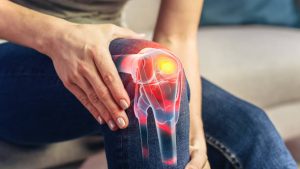Living with persistent pain is a reality for many individuals, and effectively managing this discomfort is crucial for maintaining a quality of life. This continuous suffering, known as chronic pain, is more than just a prolonged bout of ordinary pain; it is a complex, often baffling condition that persists long after the initial trigger—be it an injury or illness—has healed. Addressing the multifaceted nature of chronic pain is essential, and that involves a bespoke blend of medical treatment and adjustments to daily living. This guide will offer in-depth insights into managing long-term pain with the hope of providing not just understanding, but tangible relief.
Delving into the Nature of Persistent Pain
Contents
- 1 Delving into the Nature of Persistent Pain
- 2 Insights into Medical Treatments for Lasting Pain
- 3 Adopting Day-to-Day Changes to Mitigate Steady Pain
- 4 Embracing Advances in Pain Management Technologies
- 5 Upholding Individualized Approaches to Pain Management
- 6 Journeying Toward Enhanced Quality of Life

Persistent pain is a far cry from the short-lived pain that comes from a stubbed toe or a paper cut. The latter is an immediate, sharp response from our body alerting us to potential damage; it generally fades as the injury heals. In contrast, persistent pain is an enigma—it hangs around, unwelcome, complicating the sufferer’s existence. Exploring these intricacies lays the groundwork for effective management strategies that are key for living a fuller life despite the discomfort.
Persistent pain can arise from a variety of ongoing health issues such as arthritis or nerve damage. Zeroing in on the particular cause of pain is substantial in crafting a plan that is individually sculpted to the patient’s circumstances. It’s crucial to acknowledge that chronic pain transcends physical discomfort—its ripples can touch every shore of emotional health, possibly ushering in irritability or even depressive episodes. Consequently, a wide-reaching approach to treatment that tends to both the physical symptoms and psychological impact is imperative to uphold a person’s health and joy in life.
Neglecting chronic pain is ill-advised, as it can intensify, becoming more challenging to manage and negatively influencing one’s daily functionality. This can have a spillover effect into the realms of employment, personal relationships, and emotional well-being. Fortunately, there’s a beacon of hope: both medical and lifestyle transformations can lead to substantial alleviation, helping guide individuals towards a life where pain takes a back seat.
Insights into Medical Treatments for Lasting Pain

Many individuals find solace in medication for managing enduring pain. One might consider a slew of options ranging from standard painkillers and anti-inflammatory medications to specialized prescriptions such as certain antidepressants that have shown efficacy in mitigating pain sensations. Importantly, these medications are designed with sustained relief in mind, as opposed to just quick fixes.
Physical therapy is a linchpin in the fight against chronic pain. It serves as a means to fortify the body, enhance range of motion, and promote functionality, which in turn can significantly lessen the pain experience, empowering those battling chronic pain towards greater autonomy in their everyday tasks.
For some, particularized interventions like injections or specialized nerve blocks might be the key when other tactics prove insufficient. Moreover, surgical procedures are seen as a frontier for extreme cases when all other avenues have been explored, potentially providing a more lasting resolution for the origins of chronic pain.
Adopting Day-to-Day Changes to Mitigate Steady Pain

Engagement in consistent exercise is widely recognized as a highly beneficial tool against chronic pain. This is because physical activity encourages the release of endorphins, the body’s own pain-relieving agents, while simultaneously safeguarding against the weakening and stiffening of the body which can elevate pain levels. Opting for gentle, low-impact exercise regimes such as casual strolls, Pilates, or other similar forms of activity is a wise choice for individuals grappling with persistent pain.
The impact of diet in the context of chronic pain cannot be understated. A diet focused on anti-inflammatory properties may decrease systemic inflammation, potentially dampening pain perception. Ensuring dietary intake includes a colorful array of fruits, verdant vegetables, lean protein sources, and integral grains is key to both overall health and specific pain management strategies.
The stress-pain feedback loop is another critical aspect. Stress can accentuate pain, making it even more crucial to implement stress relief practices such as mindful breathing, gentle progressive muscle relaxation, and mindfulness meditation. These can alleviate stress and therefore, help manage pain more effectively. Consistently good sleep is invaluable, providing critical rest and recuperation, vital for those handling chronic pain.
Embracing Advances in Pain Management Technologies

The advancing frontier of technology has ushered in new modalities such as TENS units, which have been shown to be supportive for people experiencing chronic pain. These units send delicate electrical impulses through the skin which have the potential to interrupt the pain communication pathways to the brain, offering users a measure of relief.
Equally important is nurturing one’s mental and emotional health. Approaches like cognitive-behavioral therapy enable an individual to reframe negative thought processes that can worsen their perception of pain. The camaraderie and empathy found in support groups or through personal therapy sessions can bolster emotional resilience, rendering the task of chronic pain management more manageable.
Upholding Individualized Approaches to Pain Management

There is no catch-all solution for chronic pain; effective management requires a customized treatment catered to each person’s particular experience. An approach that expertly weaves together medical care with lifestyle tweaks often yields the most fruitful outcomes. Establishing a collaborative relationship with healthcare professionals to devise a tailored plan is vital, as the aim is not simply to alleviate pain but to enhance functional capacity and improve the individual’s enjoyment of daily life.
Journeying Toward Enhanced Quality of Life

The pursuit of managing chronic pain is a shared and personal one, necessitating investigation into a variety of solutions until the ideal fit is found for an individual. This exploration has journeyed through the intricate terrain of pain management, offering not only pragmatic guidance but a message of heartfelt understanding. Those on the path of chronic pain management are encouraged to persist with their tailored treatment plans and maintain a willingness to embrace new adaptations in their lifestyle as necessary. It is this perseverance that will reap the rewards of autonomy and enrichment in one’s life, notwithstanding the challenge of chronic pain.
Navigating the complexities of chronic pain is a shared journey that requires assessing diverse treatment options until finding what’s optimal for the person in suffering. This guide has ventured through the intricate arena of pain management, offering actionable guidance paired with empathetic understanding. The message for those enduring chronic pain is one of commitment—stay engaged with your treatment strategy and remain open to adapting your lifestyle to meet the demands of managing chronic pain. The perseverance to continue on this path is rewarded by a renewed sense of control and an improved sense of well-being.

